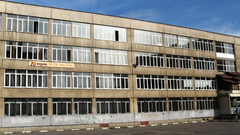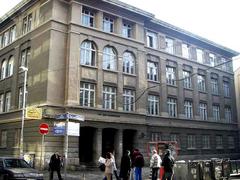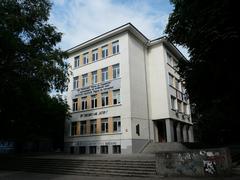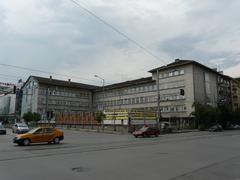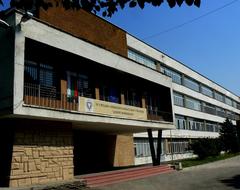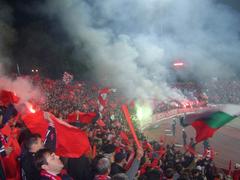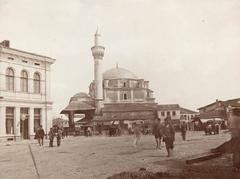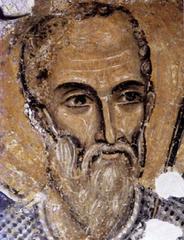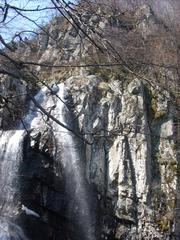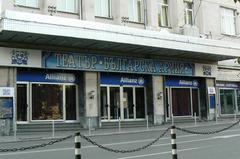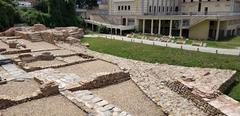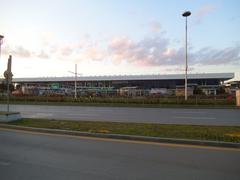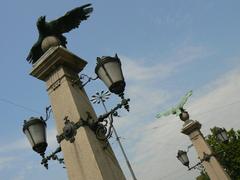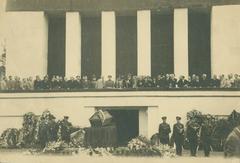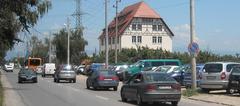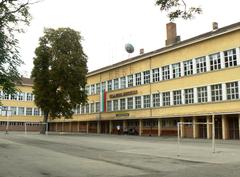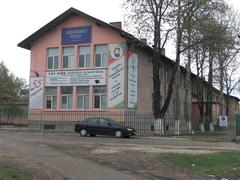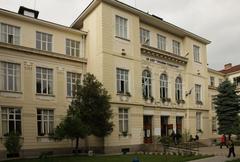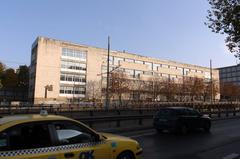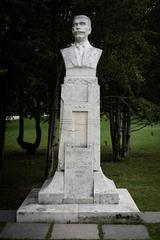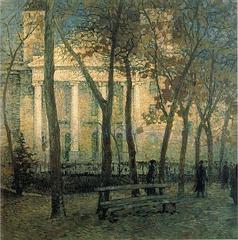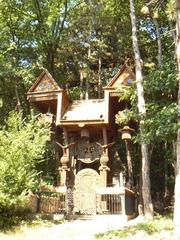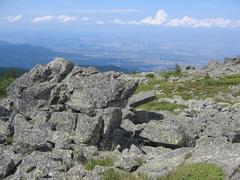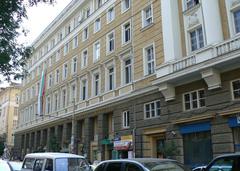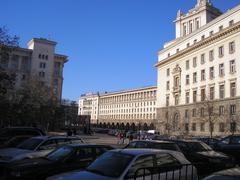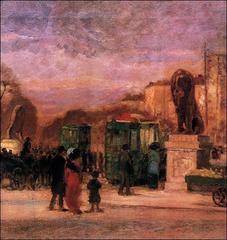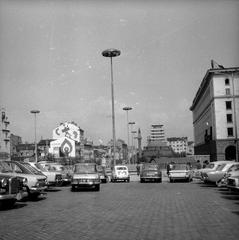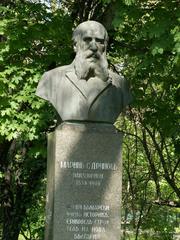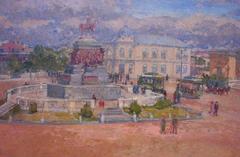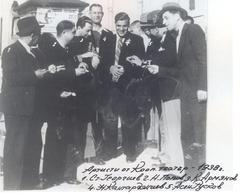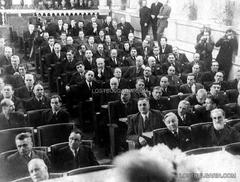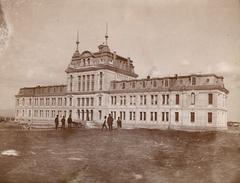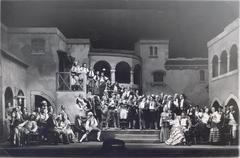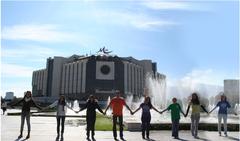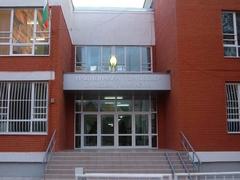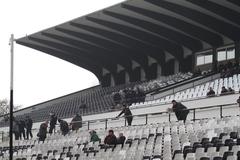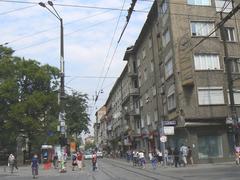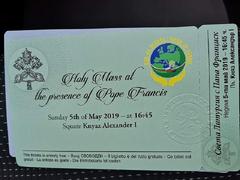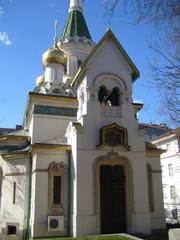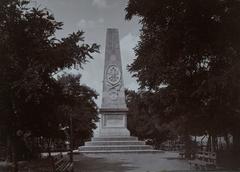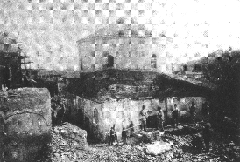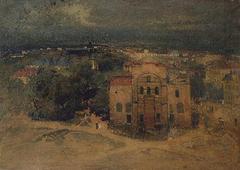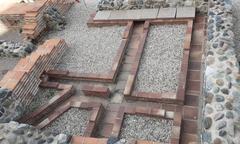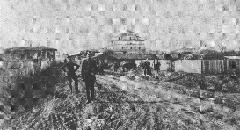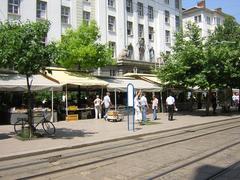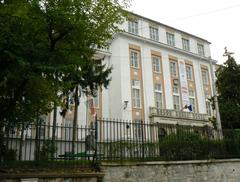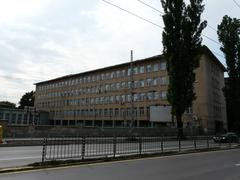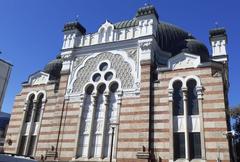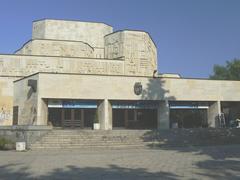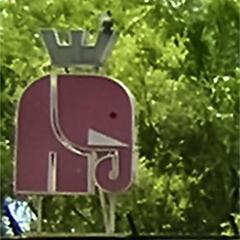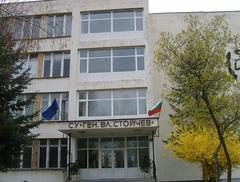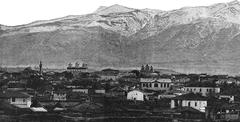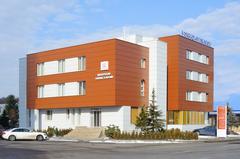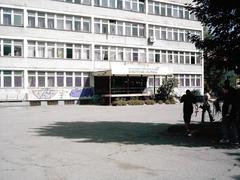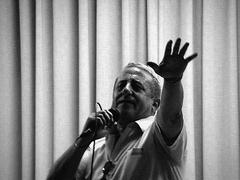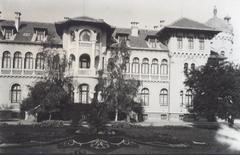
Cathedral of the Dormition Sofia: Visiting Hours, Tickets, and Travel Guide
Date: 04/07/2025
Introduction
The Cathedral of the Dormition (Катедрала Успение Богородично) is a distinguished religious and cultural landmark in Sofia, Bulgaria. As the mother church of the Bulgarian Greek Catholic Eparchy of Sofia, it uniquely embodies both Byzantine and Bulgarian architectural styles, symbolizing the intersection of Eastern and Western Christian traditions. Constructed in the early 20th century during Bulgaria’s national revival, the cathedral is celebrated for its spiritual significance, historical resilience, and vibrant role in Sofia’s diverse religious environment. Visitors are drawn to its Neo-Byzantine design—marked by impressive domes, intricate frescoes, and an ornate iconostasis—as well as to the profound theological meaning of the Dormition (Assumption) of the Virgin Mary, observed annually on August 15th. Centrally located, the cathedral provides easy access to other historical sites such as the Alexander Nevsky Cathedral, Saint George Rotunda, and Vitosha Boulevard, making it an essential stop for those exploring Sofia (Travel Buddies; GCatholic; Trek Zone).
Table of Contents
- Historical Background
- Architectural Highlights
- Religious and Cultural Significance
- Visiting Information
- Accessibility and Visitor Amenities
- Nearby Attractions
- Frequently Asked Questions (FAQ)
- Summary and Recommendations
- References
Historical Background
Origins and Construction
The Cathedral of the Dormition was constructed between 1922 and 1924 to serve the Bulgarian Greek Catholic community—an Eastern Rite group in communion with Rome. Its establishment coincided with Bulgaria’s post-Ottoman national revival and reflected the growing desire for religious and cultural identity. The cathedral’s design, attributed to architect Heinrich, was Sofia’s first significant concrete church, blending modern materials with Byzantine traditions (Wikipedia).
Community and Context
Founded through the efforts of Monsignor Vikenti Peev and support from Popes Benedict XV and Pius XI, the cathedral became a focal point for the city’s Eastern Catholics. Its location in Sofia’s then-outskirts mirrored the community’s growth and evolving place within Bulgarian society.
Architectural Highlights
Exterior Features
Located at 5 Ljulin Planina Street in the quiet Vazrazhdane district, the cathedral’s pale stone and brick façade, rounded arches, and central dome distinguish it from Sofia’s grand Orthodox churches. The modest bell tower above the entrance calls parishioners to worship, while arched windows and the dome’s drum fill the sanctuary with natural light, creating an atmosphere of humility and spiritual focus (TravelsHelper).
Interior Design
The cathedral follows a cross-in-square plan, with the spacious nave crowned by a dome depicting Christ Pantocrator. The gilded iconostasis, adorned with icons of Christ, the Virgin Mary, and saints, separates the sanctuary and is a focal point for worship. Walls and ceilings are decorated with vibrant frescoes depicting key biblical scenes and Marian iconography, rendered in luminous gold and bright colors.
Traditional liturgical furnishings include a bishop’s throne, choir stalls, and ornate candle stands, all contributing to the immersive sensory experience of Orthodox worship.
Religious and Cultural Significance
The Dormition of the Theotokos
The cathedral is dedicated to the Dormition (Assumption) of the Virgin Mary, commemorated on August 15th. This major feast celebrates Mary’s “falling asleep” and her assumption into heaven, symbolizing hope and the promise of eternal life. The interior iconography often centers on this theme, illustrating Mary surrounded by apostles and angels (Travel Buddies).
Role in the Bulgarian Greek Catholic Church
Serving as the episcopal seat for the Bulgarian Greek Catholic community, the cathedral hosts regular services, sacraments, and major feast day celebrations. Its liturgical life combines Eastern Rite traditions with Catholic communion, offering a rare glimpse into Bulgaria’s religious pluralism (GCatholic).
Artistic and Educational Importance
The cathedral is a center for the preservation of Orthodox art and liturgical music. It offers educational programs, guided tours, and exhibitions that highlight its history and spiritual heritage. Visitors can gain insight into the unique blend of Catholic and Orthodox traditions present in Sofia (Travel Buddies).
Visiting Information
Location and Getting There
- Address: 5 Ljulin Planina St., Sofia 1606, Bulgaria
- District: Vazrazhdane (central Sofia)
- By Metro: Serdika station (Lines 1 & 2) is about a 10–15 minute walk away
- By Tram/Bus: Stops near Vitosha Boulevard and Mall of Sofia
- Parking: Limited; paid zones exist near Mall of Sofia and main boulevards
Visiting Hours
- General Hours: Daily, 8:00 AM – 7:00 PM (may vary during major feasts and holidays)
- Liturgical Hours: Extended during Sundays and feast days
- Tip: Check local notice boards or call ahead for updates
Admission and Tickets
- Entry: Free of charge
- Donations: Voluntary donations are appreciated to help with maintenance and community projects
Guided Tours
- Availability: Tours are offered in multiple languages by prior arrangement; group bookings recommended
- Content: History, architecture, art, and liturgical traditions
- Booking: Contact the cathedral office in advance
Special Events
- Major Feast: Dormition of the Virgin Mary (August 15th)—special liturgies and cultural programs
- Seasonal: Occasional concerts of Orthodox chants and community events
Accessibility and Visitor Amenities
- Wheelchair Access: Main entrance is street level with ramps; accessible restrooms may be limited
- Assistance: Staff can provide support upon request
- Restrooms: Facilities are available nearby (e.g., Mall of Sofia)
- Photography: Allowed outside of services; flash and tripods not permitted during liturgy
- Dress Code: Modest attire (shoulders and knees covered); hats removed inside
- Amenities: Benches for prayer/rest; no on-site gift shop, but shops are nearby
Nearby Attractions
- St. Alexander Nevsky Cathedral: Iconic Orthodox cathedral with gold domes and rich interior (Bulgaria Focus)
- Saint George Rotunda: 4th-century church with ancient frescoes (Tours Bulgaria)
- Saint Nikolas Russian Church: Known for its golden domes and peaceful setting (MyTravelation)
- Ivan Vazov National Theatre: Neo-Baroque theatre and cultural hub (MyTravelation)
- Vitosha Boulevard: Lively pedestrian street with shops and restaurants (MyTravelation)
- National Archaeological Museum: Extensive historical collections (MyTravelation)
- Boyana Church and Vitosha Mountain: UNESCO site with medieval frescoes; hiking and nature (MyTravelation)
Frequently Asked Questions (FAQ)
Q: What are the Cathedral of the Dormition’s visiting hours?
A: Open daily from 8:00 AM to 7:00 PM, but hours may vary during special events or holidays.
Q: Is there an entrance fee?
A: No, entry is free; donations are welcome.
Q: Are guided tours available?
A: Yes, with prior arrangement—contact the cathedral office to book.
Q: Is the cathedral wheelchair accessible?
A: Yes, via the main entrance; contact staff for assistance.
Q: Can I take photos inside?
A: Yes, but not during services; flash and tripods are not allowed.
Q: What is the dress code?
A: Modest clothing covering shoulders and knees; hats should be removed.
Summary and Recommendations
The Cathedral of the Dormition is a serene and architecturally significant sanctuary at the heart of Sofia’s religious and cultural life. Its unique blend of Byzantine and Bulgarian influences, coupled with its role as the center of the Bulgarian Greek Catholic community, makes it a compelling destination for travelers seeking insight into Bulgaria’s spiritual and historical landscape. Free entry, accessibility, and proximity to other major attractions enhance its appeal. For the most rewarding experience, combine your visit with a guided tour and explore nearby landmarks such as St. Alexander Nevsky Cathedral and the National Archaeological Museum. Always check for current visiting hours and special events before you go, and consider using travel tools like the Audiala app for up-to-date information and audio guides.
For more details, consult these resources:
- Travel Buddies
- GCatholic
- Trek Zone
- Wikipedia
- Go World Travel
- Urban Wanders
- Bulgaria Focus
- Bulgaria Culture
- MyTravelation
- TravelsHelper
- Tours Bulgaria



















